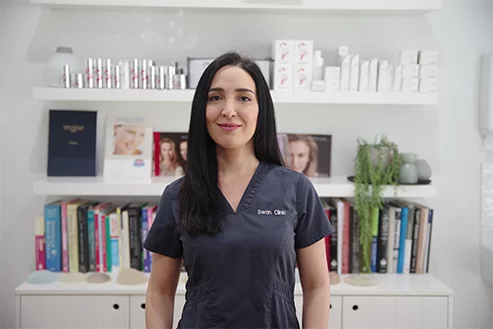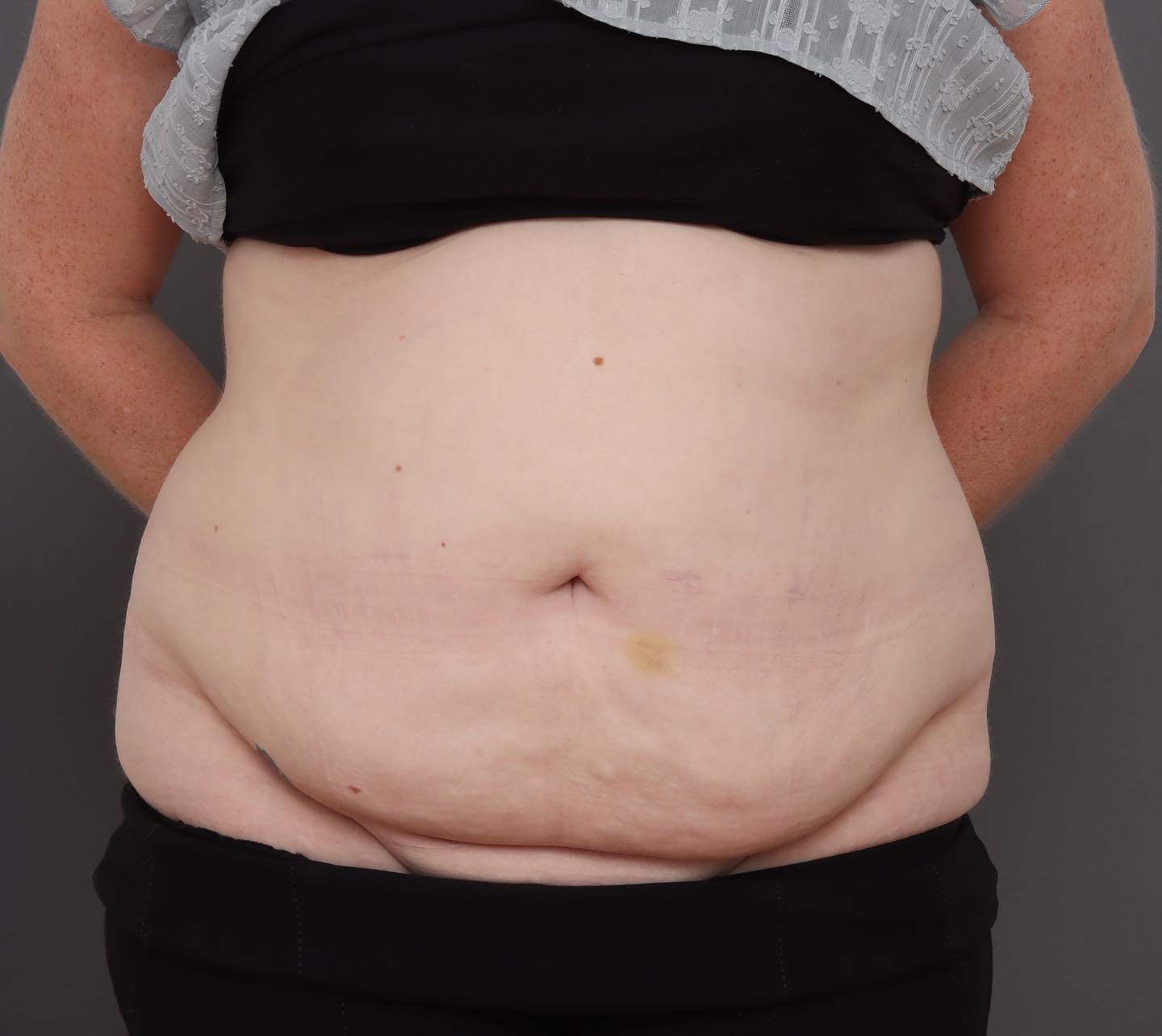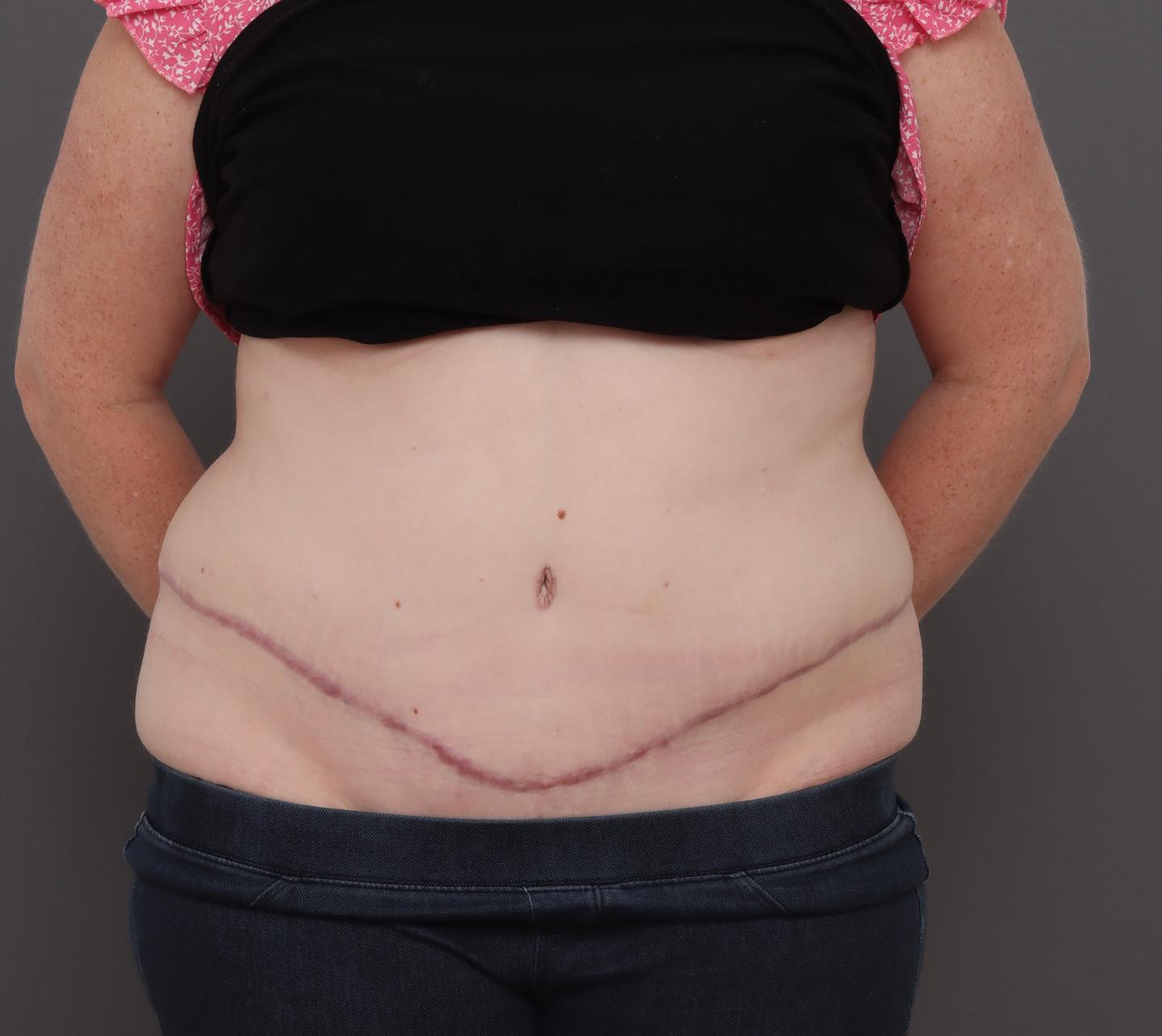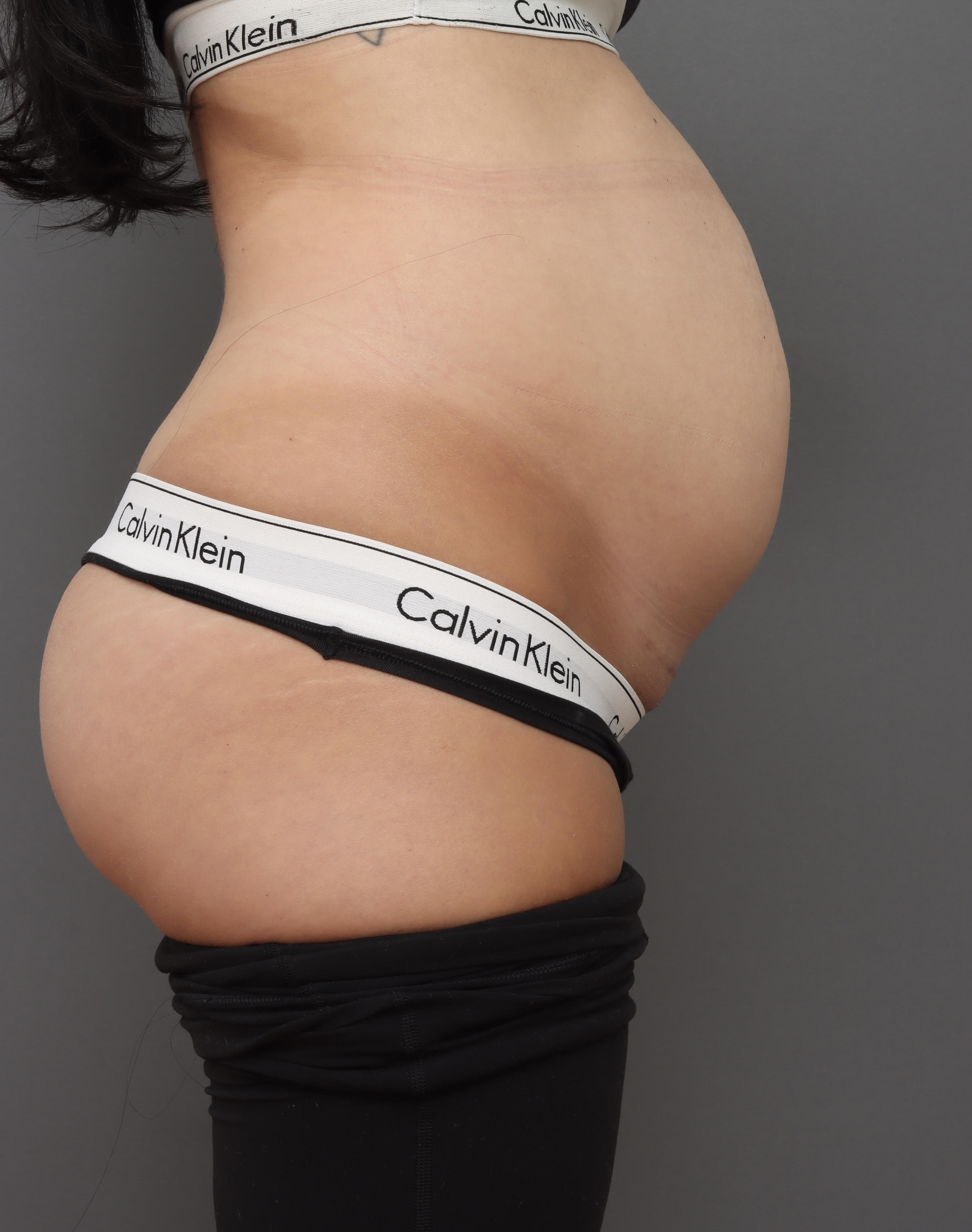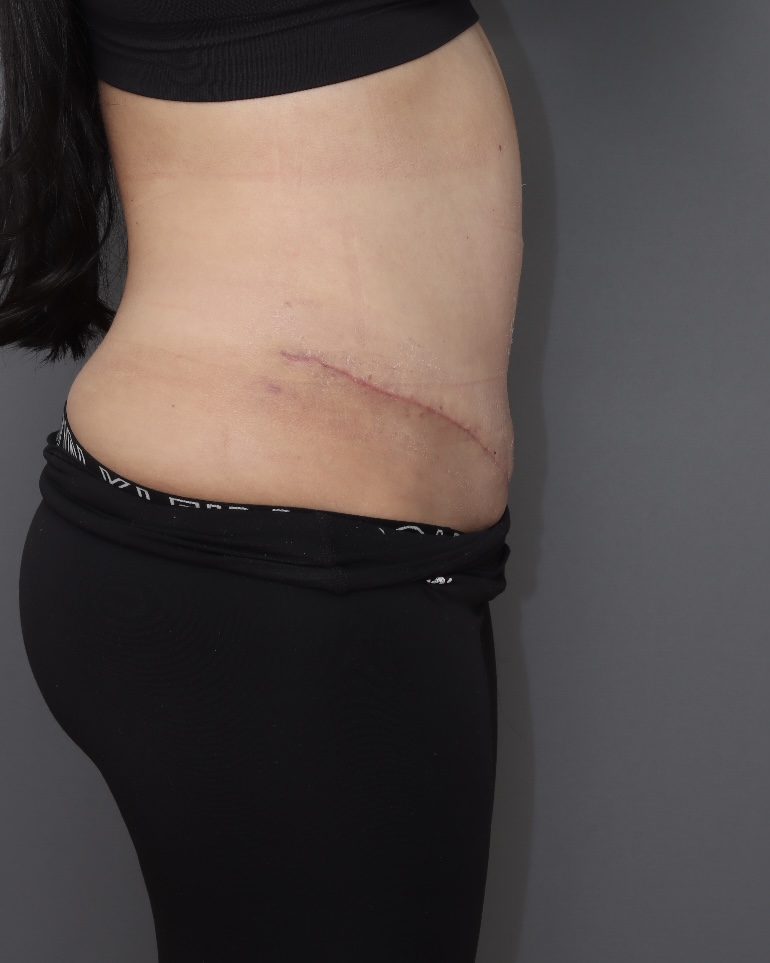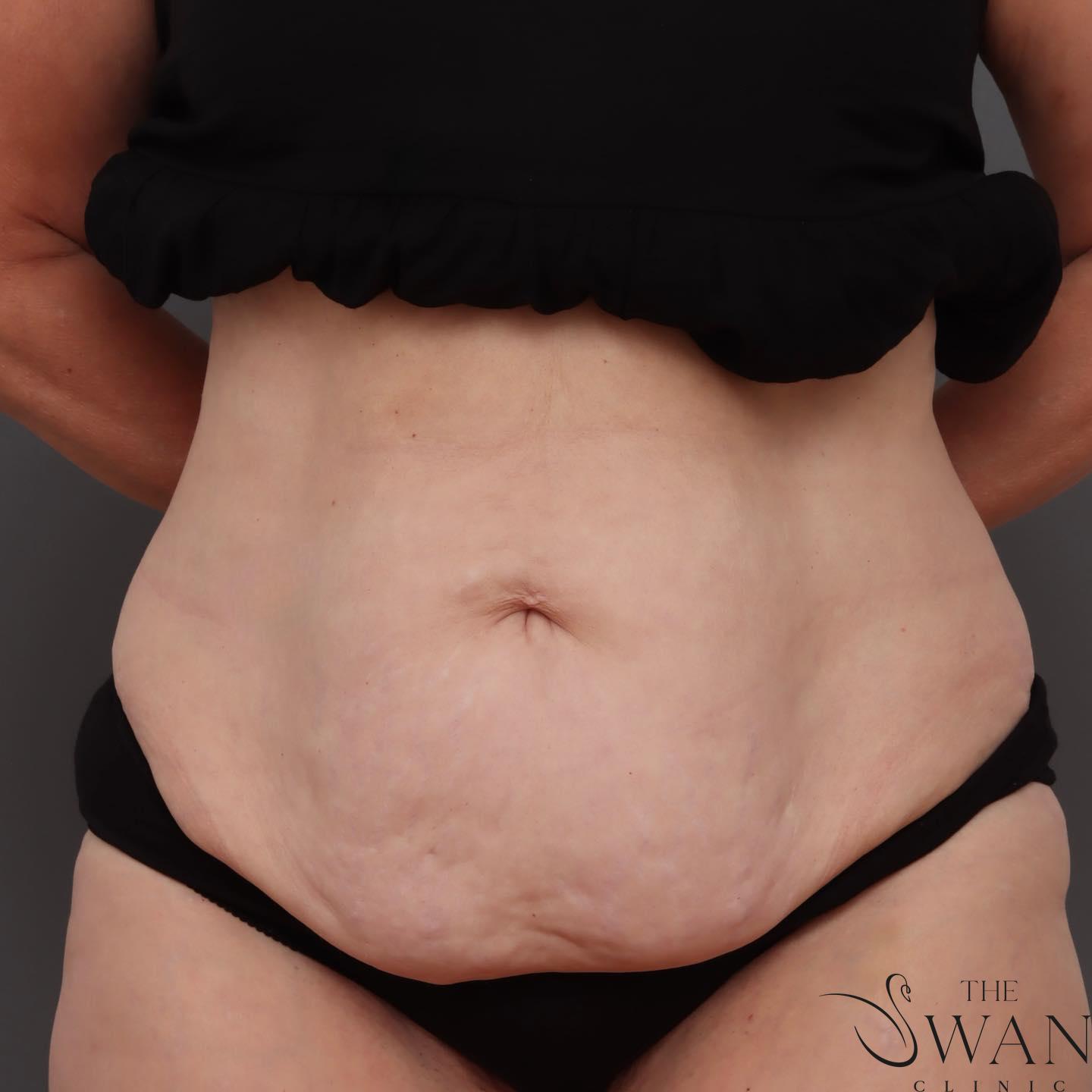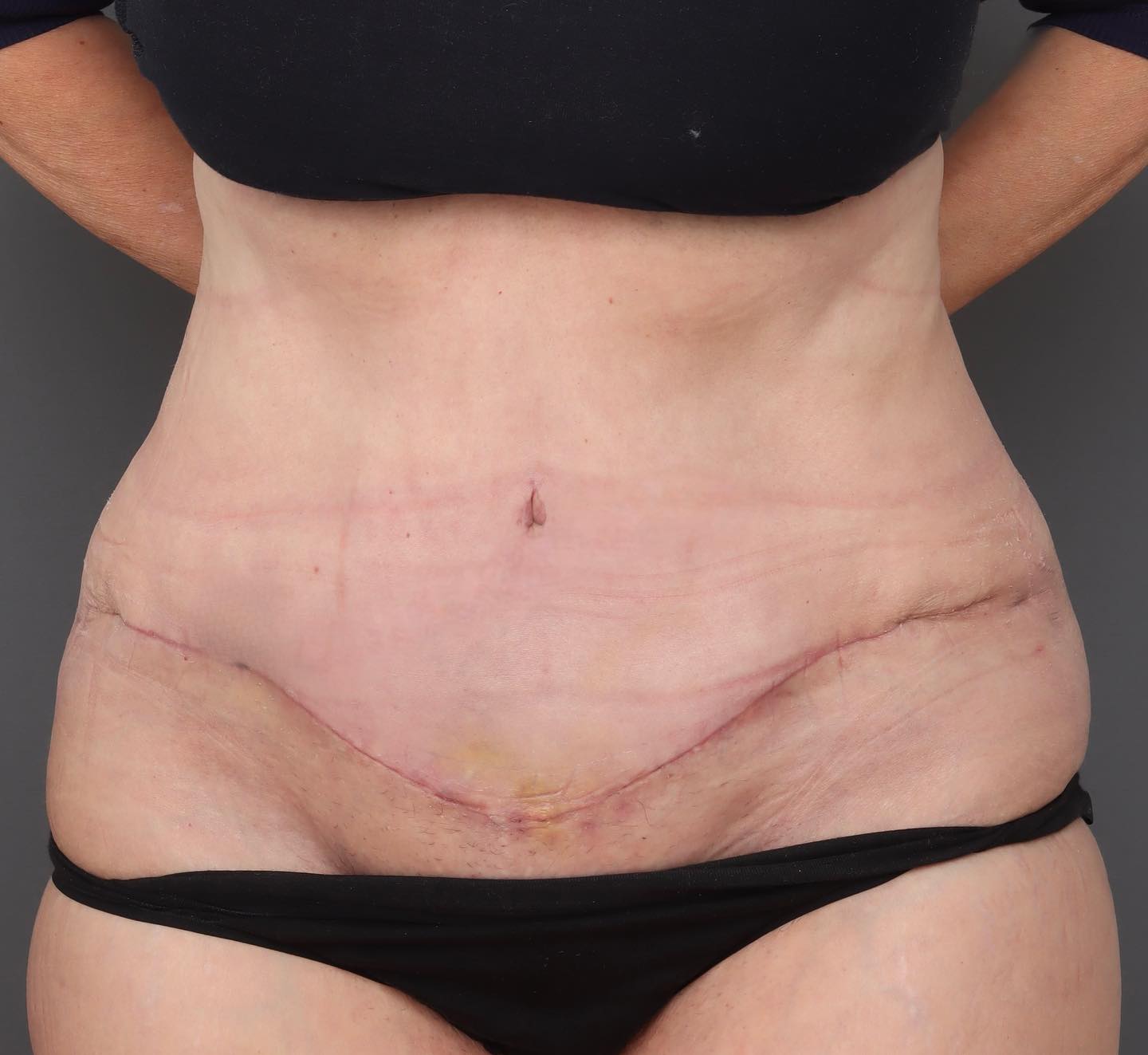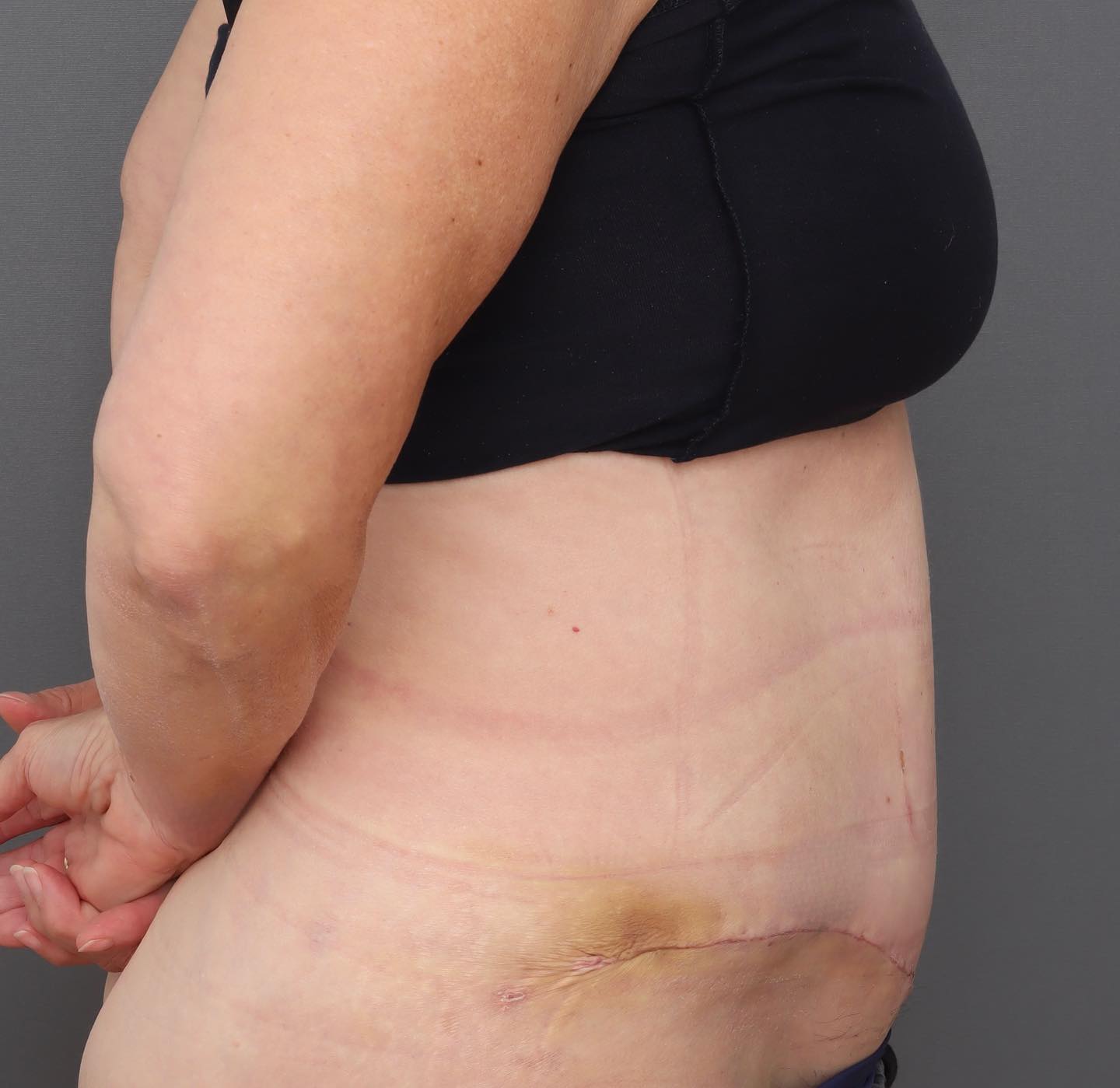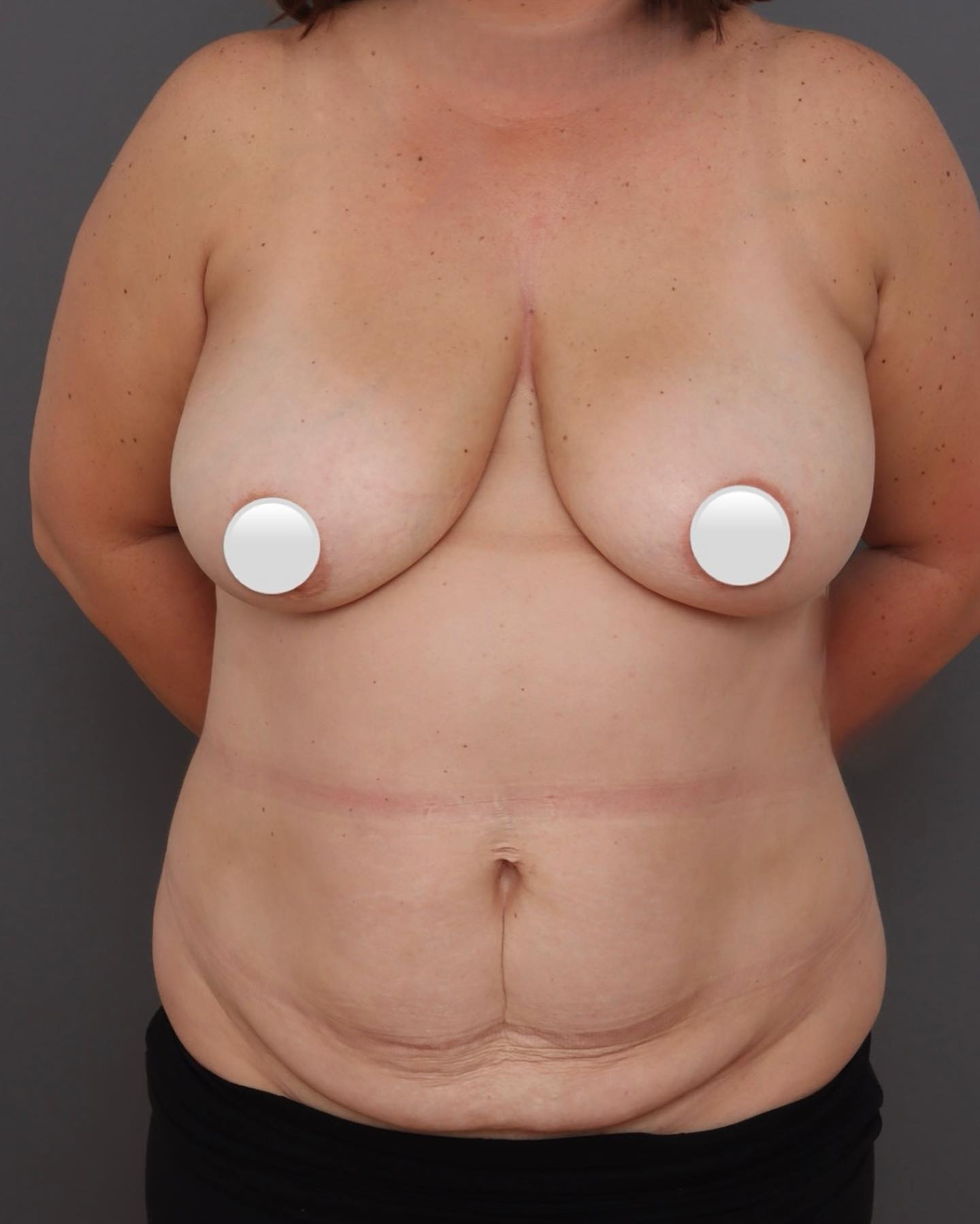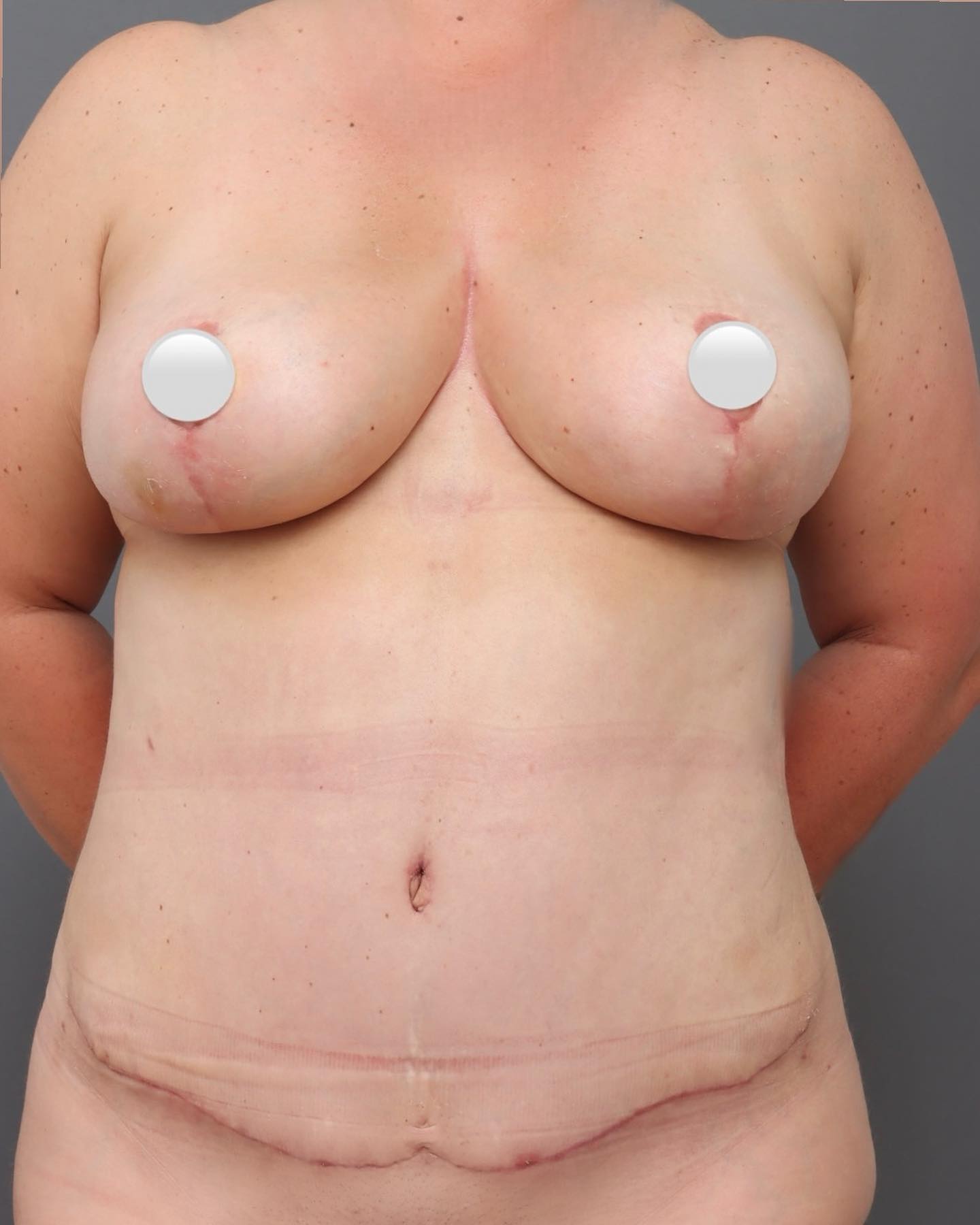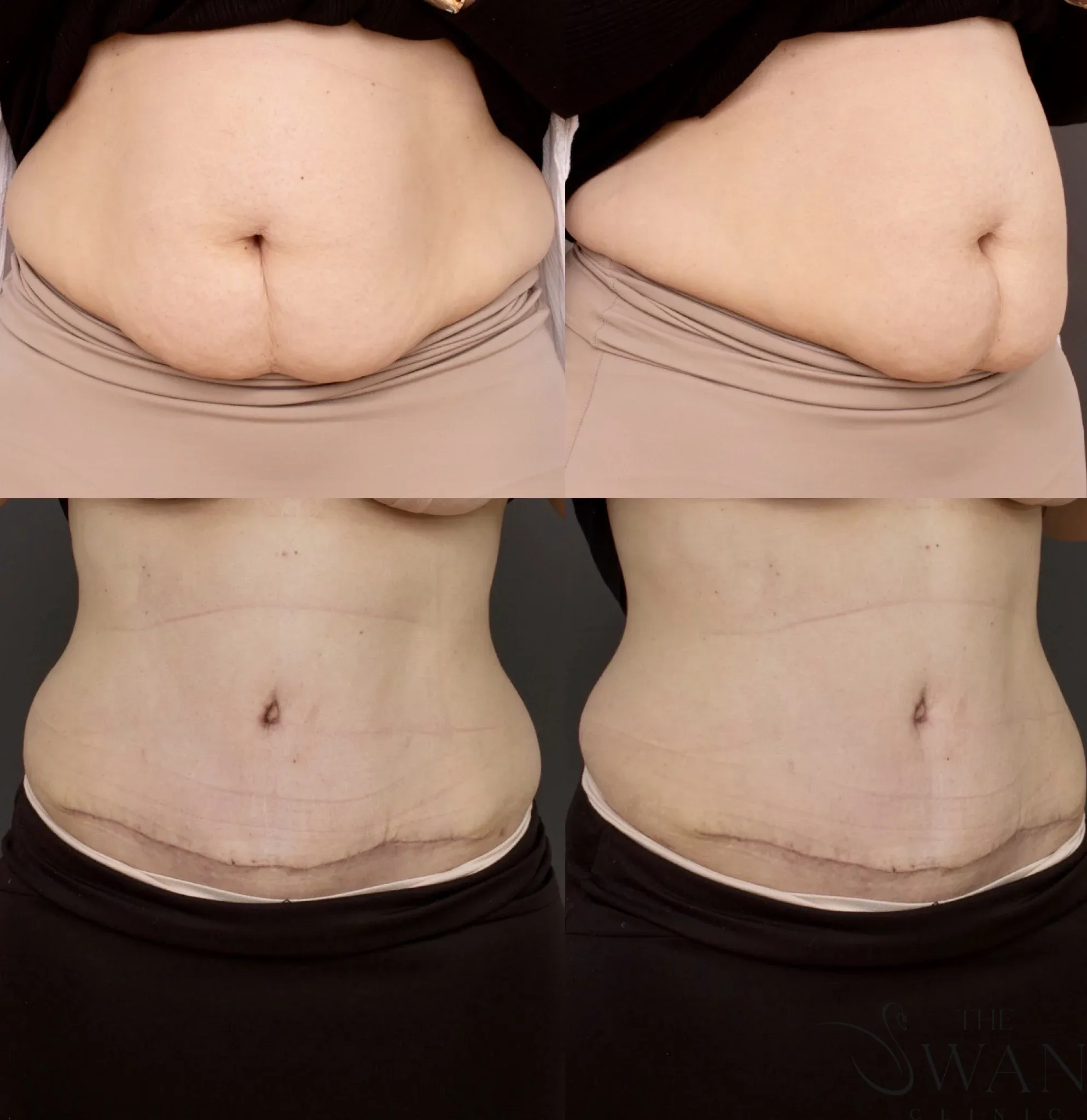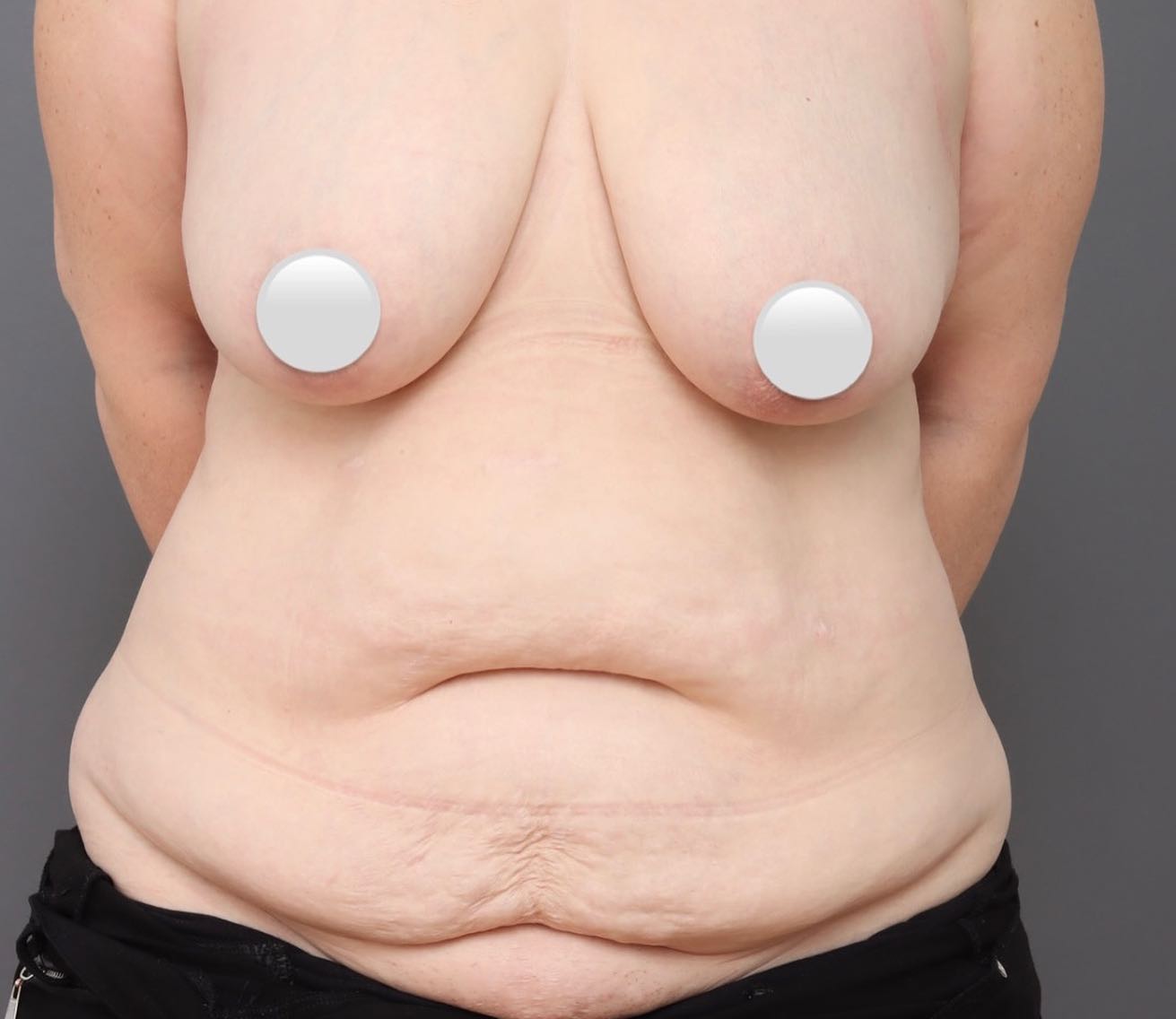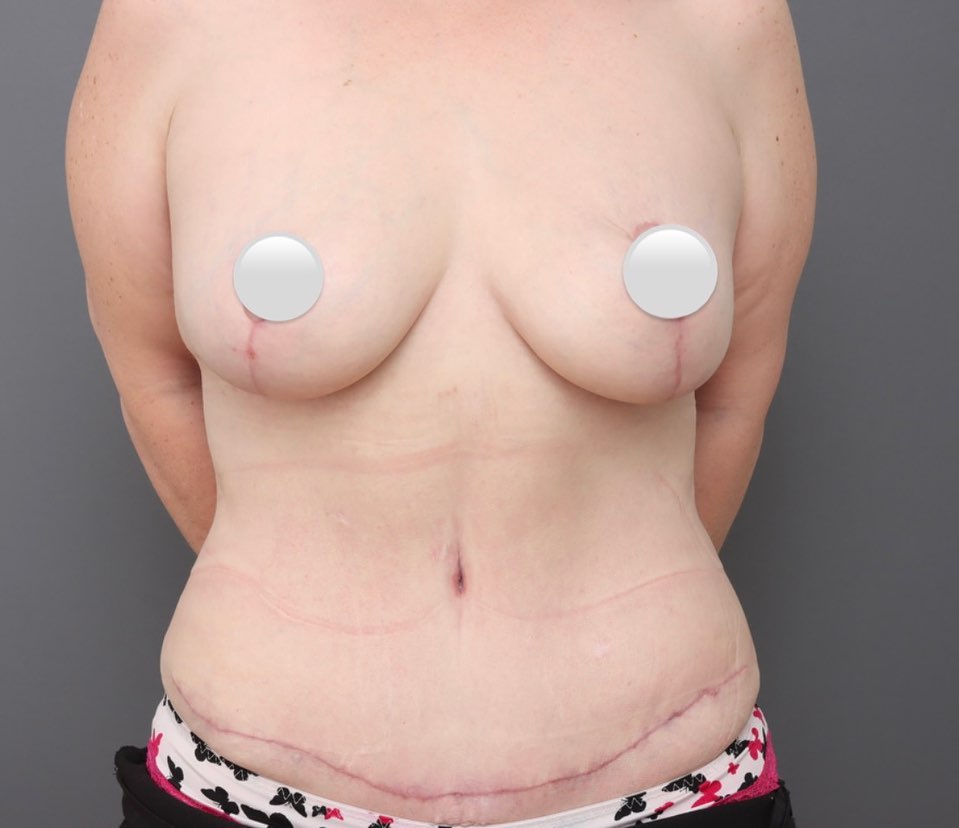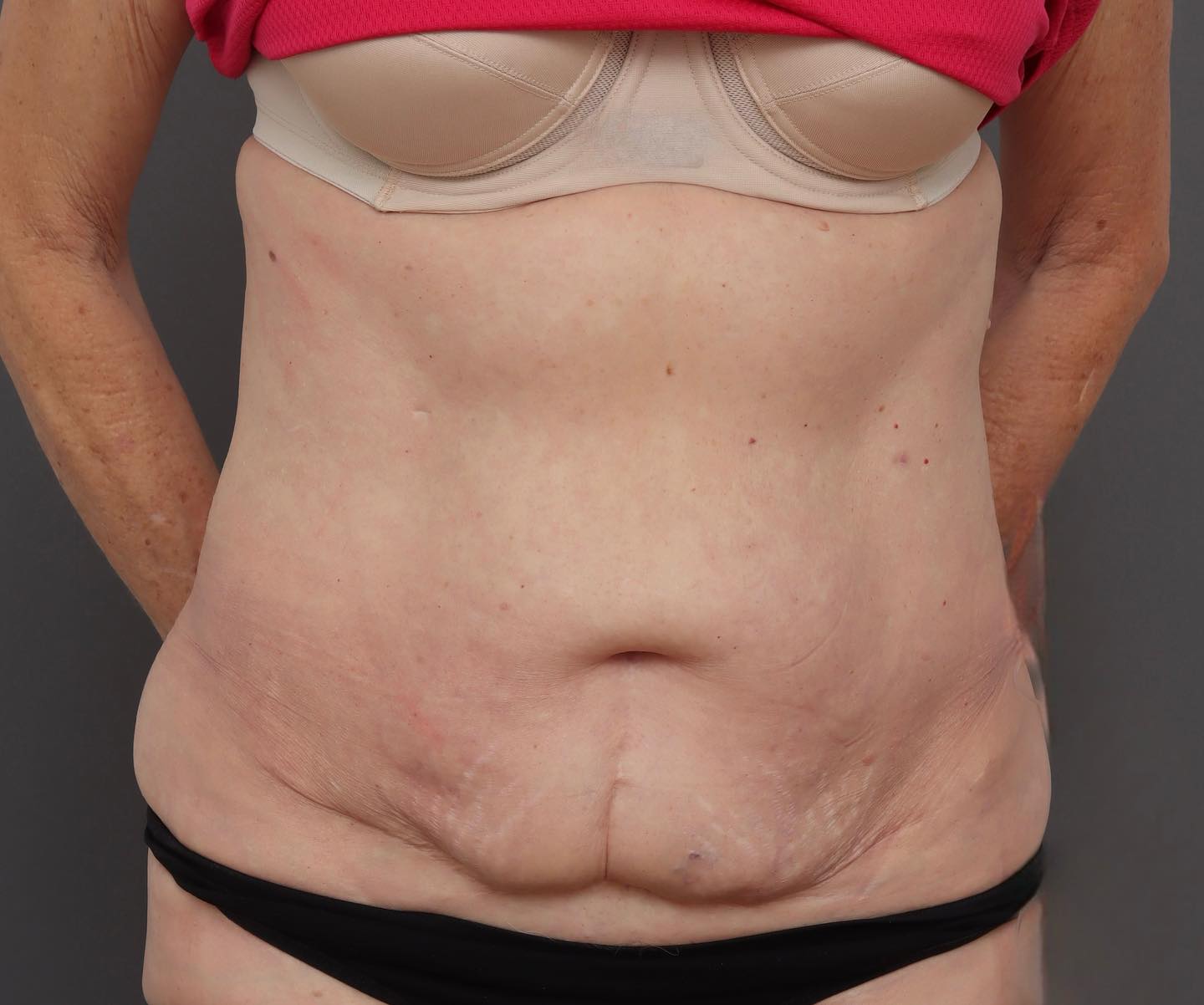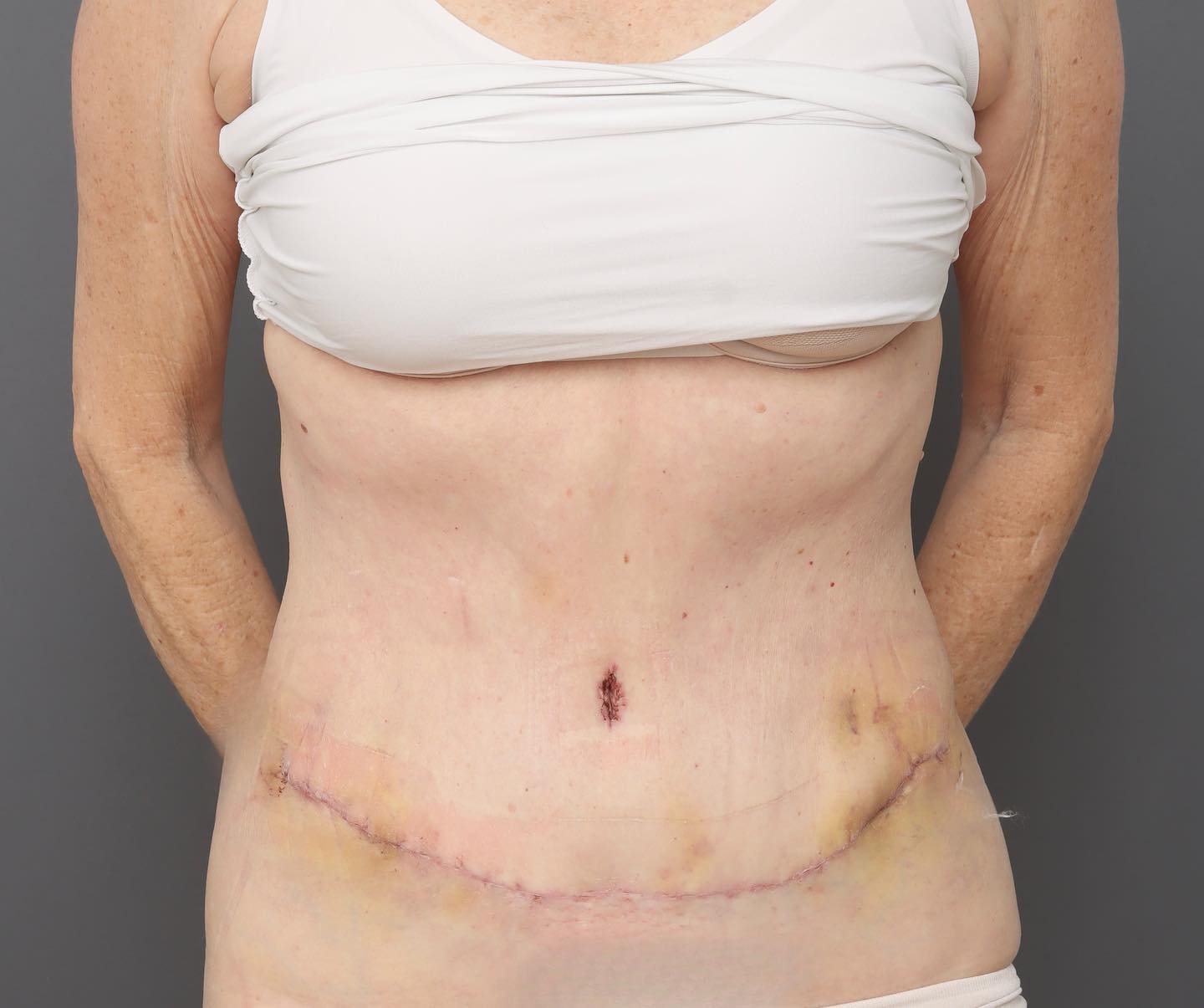ABDOMINOPLASTY
Abdominoplasty, is a surgical procedure that removes redundant skin and fat from the middle and lower abdomen. It also involves tightening the abdominal muscles to restore abdominal wall integrity and reduce laxity in the area.
Who is it for?
Abdominoplasty surgery may be suitable for individuals who have redundant skin and weakened abdominal muscles following pregnancy or significant weight loss.
For Post-Pregnancy Women:
Pregnancy can lead to stretched abdominal muscles and redundant skin in the abdominal area. This procedure aims to repair the muscle separation and remove redundant skin.
For Individuals After Weight Loss:
Significant weight loss can result in loose or redundant skin around the abdomen that is not improved by diet or exercise. Abdominoplasty can remove this to help restore the abdominal area.
Abdominoplasty Procedures Offered
At our clinic, we provide various types of abdominoplasty to address different patient needs. During your consultation, Dr Hadi will assess your individual circumstances and discuss which procedure is most appropriate.
Types of abdominoplasty:
Traditional Abdominoplasty
This procedure involves a horizontal incision across the lower abdomen, above the pubic area. Excess skin and fat are removed, abdominal muscles may be tightened, and the belly button repositioned. It is generally suitable for patients with more significant skin laxity and muscle separation.
Mini Abdominoplasty
A less extensive surgery with a smaller incision typically limited to the area between the pubic bone and belly button. This option is for those with mild to moderate redundant skin or muscle laxity below the belly button.
Extended Abdominoplasty
Targets the abdomen, flanks, and lower back with an incision extending beyond the hips. This approach addresses excess skin and tissue in a wider area.
High Lateral Tension Abdominoplasty (HLTA)
An advanced technique focusing on tightening abdominal muscles and lifting outer thighs. The incision resembles traditional abdominoplasty but with modified tension to adjust body contours.
Fleur-de-Lis Abdominoplasty
Used primarily for patients with significant horizontal and vertical excess skin, often after major weight loss. The incision forms a "T" shape to allow removal of skin both horizontally and vertically.
Circumferential Abdominoplasty (Belt Lipectomy)
This procedure addresses the abdomen, lower back and flanks, through an incision around the waist. It is commonly considered after significant weight loss.
Reverse Abdominoplasty
Targets excess skin in the upper abdomen with an incision placed under the breast crease.
Combined Liposuction and Abdominoplasty Procedure
This procedure involves liposuction of the upper and lower back and flanks, performed in conjunction with abdominoplasty.
The combined approach may be used to address excess fat and excess skin, particularly following significant weight changes or pregnancy. It is not a weight loss procedure and is generally considered in individuals who are maintaining a stable weight.
Muscle Repair in Abdominoplasty
Muscle repair, often called diastasis recti repair, may be included during abdominoplasty. Diastasis recti is the separation of the abdominal muscles, causing a midline gap or protrusion. This can result from pregnancy, weight changes, ageing, or muscle strain. Muscle repair involves suturing the separated muscles to restore abdominal wall support.
Diagnosis of Muscle Separation
An ultrasound scan is required to assess muscle separation. Medicare may cover some cost of the treatment if the gap exceeds 3 cm.
Recovery and Aftercare – Abdominoplasty
- A compression binder is typically worn for up to 6 weeks full time and 6 weeks part time to support healing and minimise swelling.
- Driving may be resumed after 1 to 2 weeks, once mobility and comfort allow and pain medication is no longer required.
- Return to work usually occurs within 1 to 2 weeks, depending on the type of work and the individual’s recovery.
- Light walking is allowed once you have seen us for your 2-week post op appointment.
- Strenuous activity, including lifting, bending, or exercise, should be avoided for 4 to 6 weeks.
- Targeted abdominal exercises should generally be delayed for up to 3 months to allow proper healing of muscle and skin layers.
- Post-operative reviews are essential to monitor progress, manage any complications, and assess wound healing.
- Scarring will mature over time; scar care will be given to support healing.
- Recovery experiences can vary significantly between individuals. Your surgeon will provide personalised instructions tailored to your procedure and health status.
Tips for Recovery
- Follow your surgeon’s instructions closely.
- Use prescribed pain medication as needed.
- Apply ice packs to reduce swelling if advised.
- Maintain a nutritious diet and stay hydrated.
- Wear compression garments as directed.
- Use leg stockings for two weeks to reduce the risk of blood clots.
- Avoid smoking and alcohol as they may affect healing.
- Follow scar care instructions provided by your surgeon.
Emotional and Follow-up Care
Recovery involves physical and emotional adjustment. Support from family, friends, and your healthcare team can be beneficial. Regular follow-up appointments are important to monitor healing and address any concerns.
Risks associated with Abdominoplasty surgery
As with any major surgical procedure, there are risks involved. These include general surgical risks and those specific to the abdominoplasty:
- Infection at the surgical site, which may require antibiotics or further treatment
- Bleeding or haematoma (collection of blood under the skin)
- Anaesthesia-related complications, such as allergic reactions or cardiovascular effects
- Seroma formation (accumulation of fluid beneath the skin), which may require drainage
- Skin or tissue necrosis (poor blood supply to an area of skin, leading to tissue breakdown)
- Changes in sensation, including numbness or altered skin sensitivity in the abdominal area
- Blood clots, such as deep vein thrombosis (DVT) or pulmonary embolism, although rare, are serious risks of major surgery
If you have any questions or wish to discuss abdominoplasty options, please contact our clinic to schedule a consultation with Dr Reema Hadi.
Before and After Photos
Real patient results from our expert procedures

